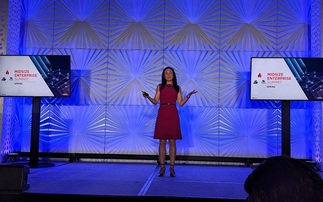At its annual UK customer conference in London, Sun tells attendees that they will have to undertake a "fundamental" shift towards Web 2.0 and a "radical transformation" to green technologies
Web 2.0 and the environment dominated the agenda at Sun Microsystem's annual UK customer conference in London as attendees were advised to make "big bets" on Web 2.0 technologies and redouble effor...
To continue reading this article...
Join Computing
- Unlimited access to real-time news, analysis and opinion from the technology industry
- Receive important and breaking news in our daily newsletter
- Be the first to hear about our events and awards programmes
- Join live member only interviews with IT leaders at the ‘IT Lounge’; your chance to ask your burning tech questions and have them answered
- Access to the Computing Delta hub providing market intelligence and research
- Receive our members-only newsletter with exclusive opinion pieces from senior IT Leaders

















